How to Tension Fence Wire
Below is a step-by-step guide on how to tension fence wire using different methods.
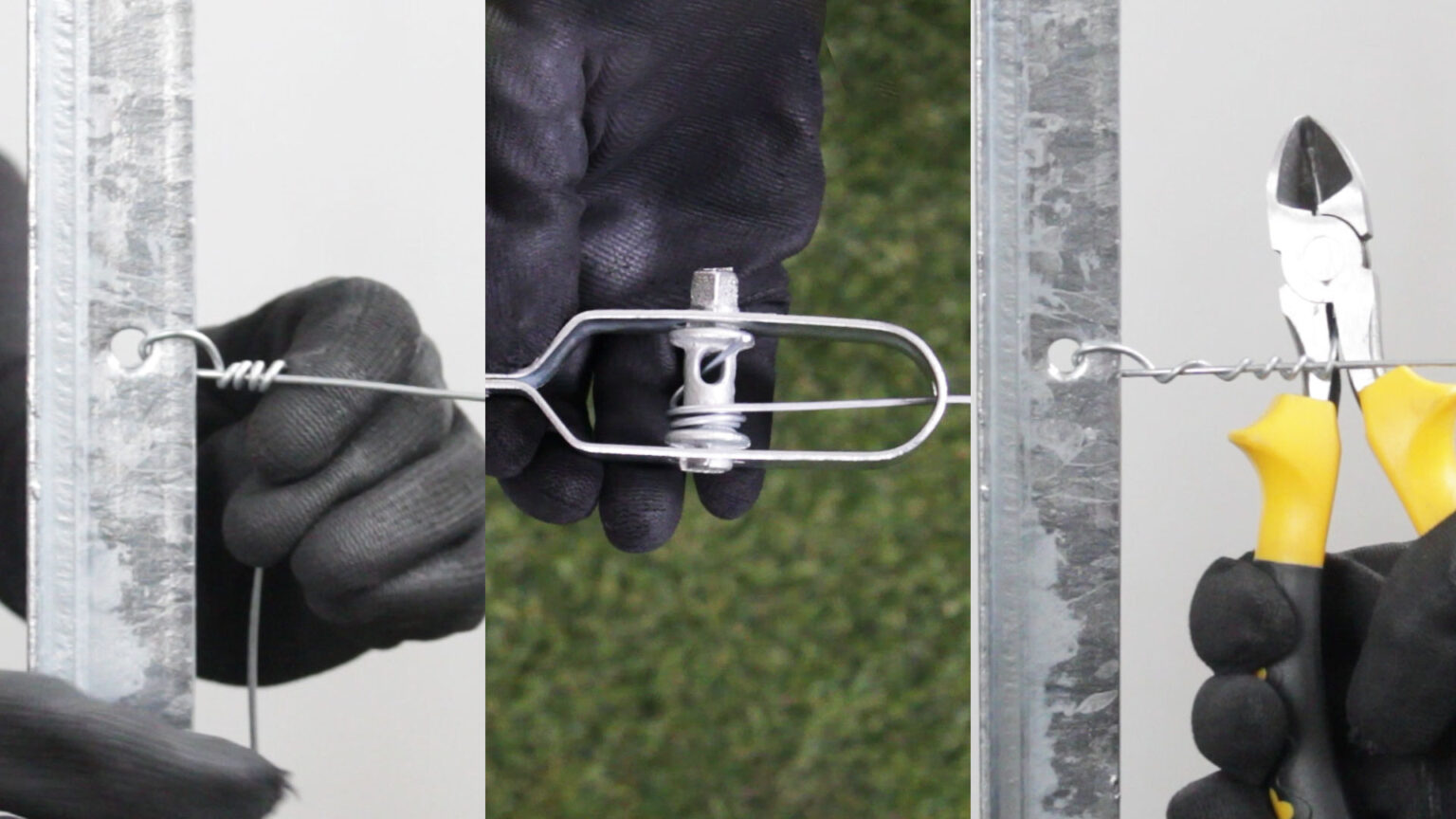
WITH HANDS
- Experience Required: Low
- Tools Required: Protective gloves, Cutters
- Materials Required: T posts, Line tensioning wire
- This is the simplest method but provides the least tension.
Step 1) Insert Into the Hole
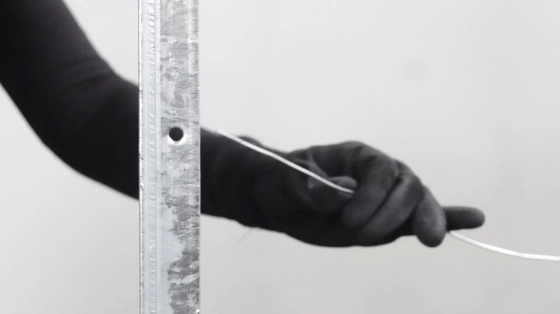
- Begin the process of how to install tension wire by inserting the strand into the pre-drilled hole of the end posts.
- Then, bend the end of the strand at a 90 degree angle to form a handle.
Step 2) Start Twisting
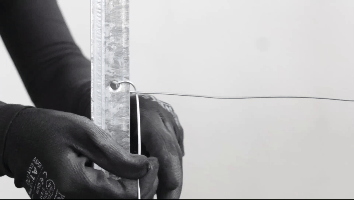
- Hold pressure on the handle and wrap it around the live wire 4-5 times.
- Then, cut off the excess strand.
WITH PLIERS
- Experience Required: Low
- Tools Required: Protective gloves, Pliers (or any twisting tool), Cutters
- Materials Required: T posts, Line tensioning wire
- This method works as a twisting tool, effectively tightening the strand with a simple twisting technique.
Step 1) Insert Line Into Hole
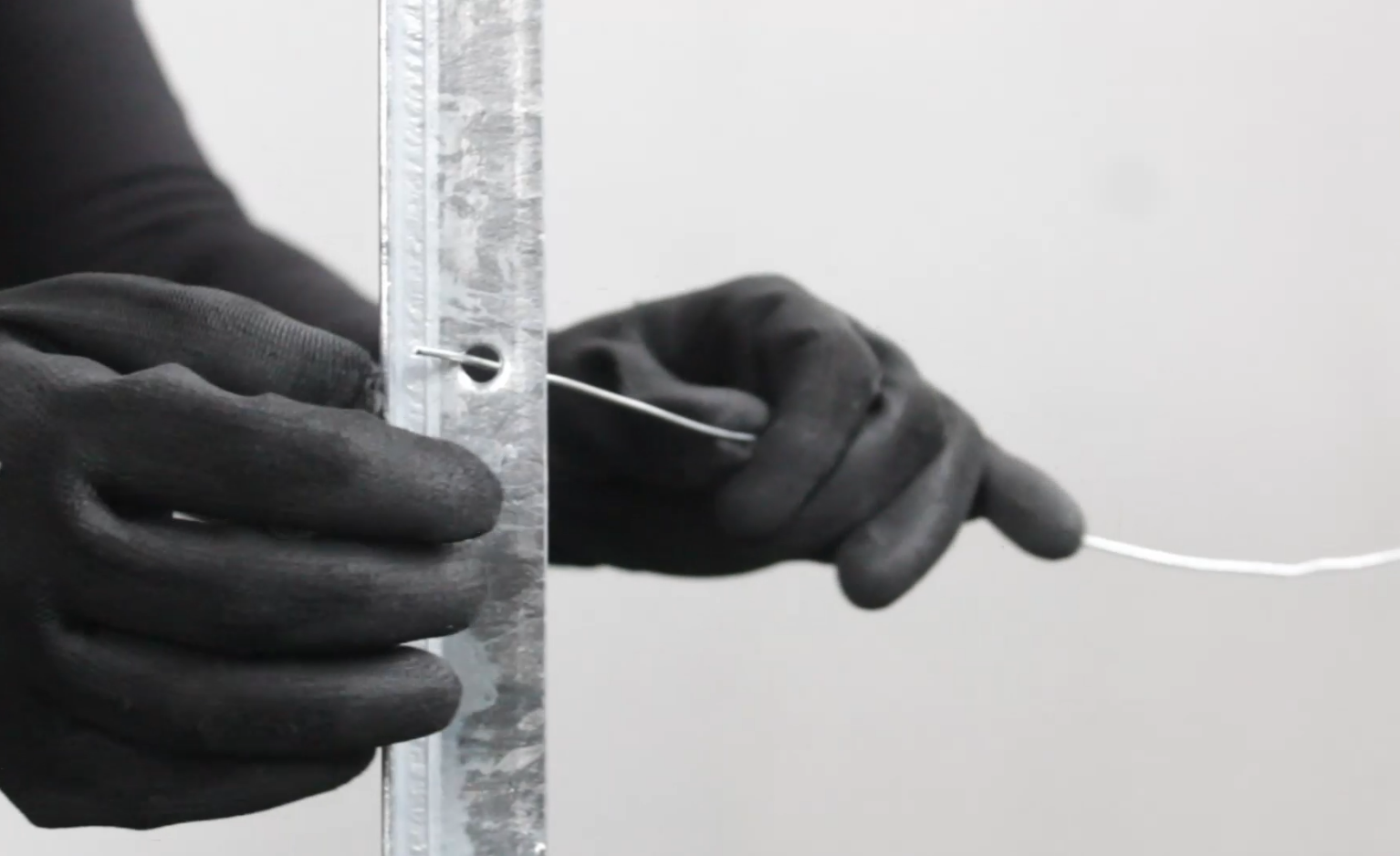
- Insert the line into the pre-drilled hole on the end post and fasten it securely.
Step 2) Insert Wire Between Pliers’ Handles
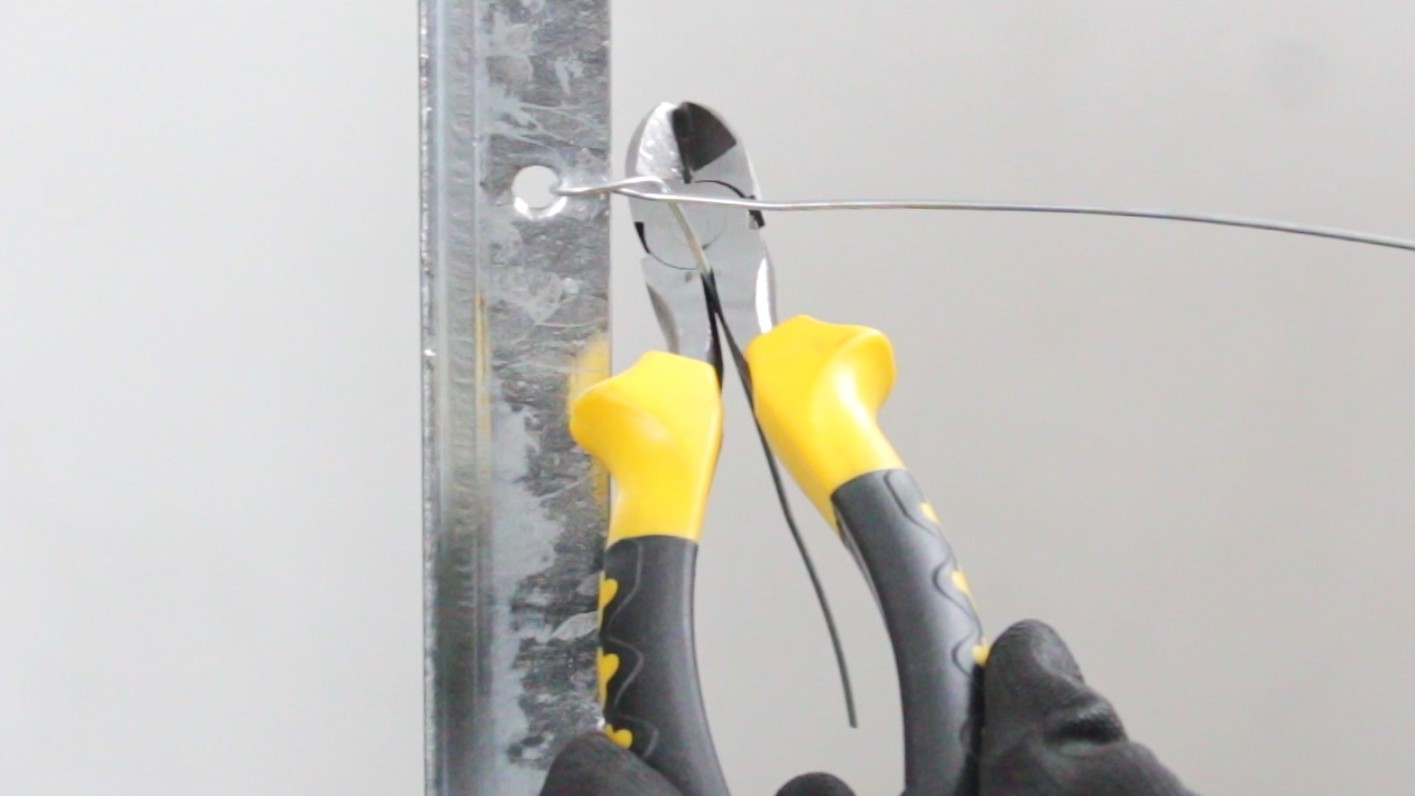
- Slightly open the pliers to create a gap between the handles.
- Insert the looped end of the strand into the space between them.
- Gently close the pliers so the loop stays in place but can still rotate freely.
Step 3) Twist the Pliers
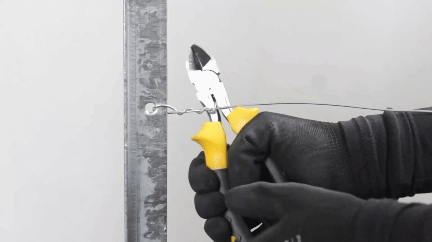
- Turn the pliers holding the loose ends in one direction.
- Continue twisting until the line is tight.
- Once secure, bend the excess line back and cut it.
WITH RADISSEUR
- Experience Required: Low
- Tools Required: Protective gloves, Pliers, Wire cutters
- Materials Required: T posts, Line tensioning wire, Radisseur
- This method works as a line strainer, providing excellent tension and is highly recommended.
Step 1) Secure Line to Starting Post
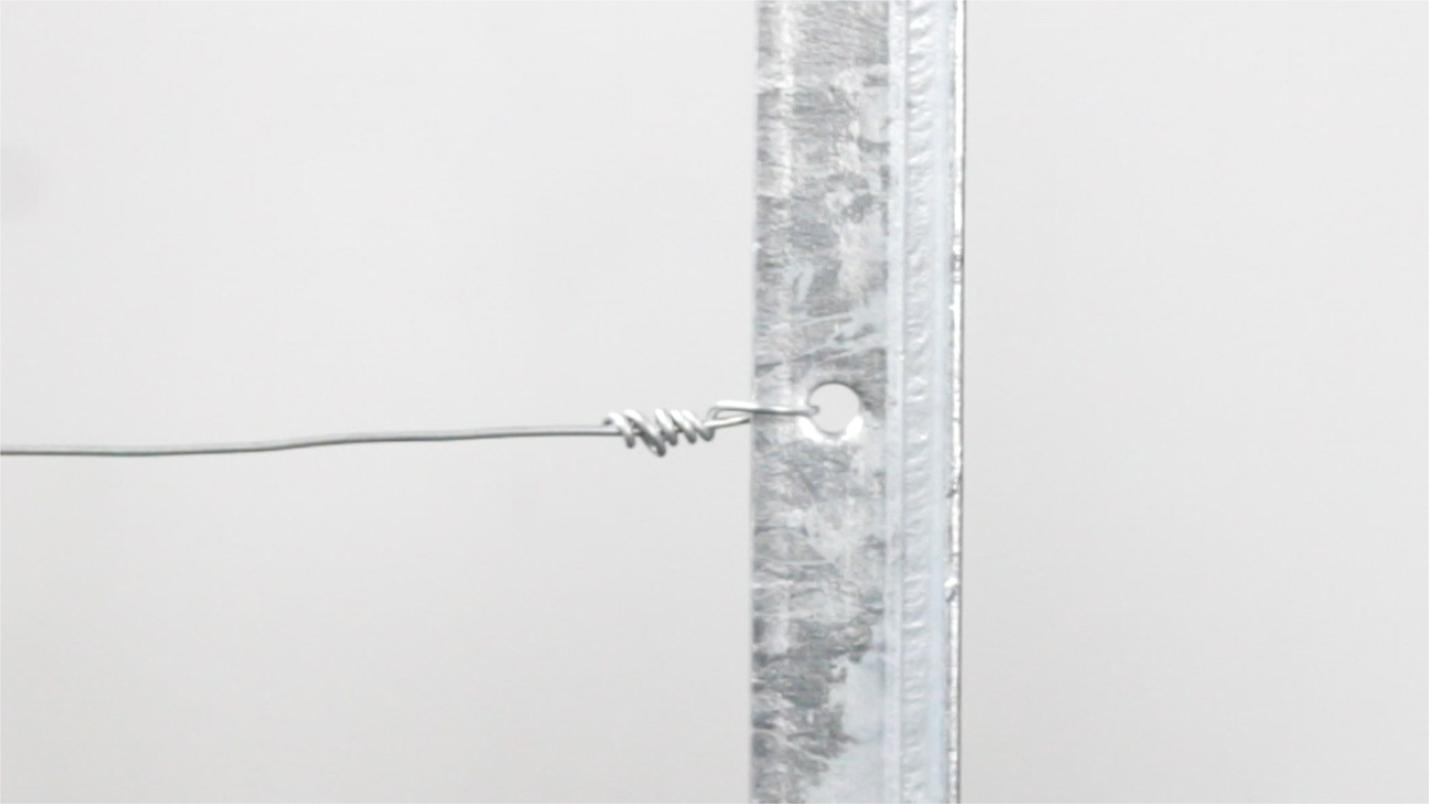
- Attach the line to the post by placing it in the hole, then wrap it around itself 4-5 times to maintain the tightness.
Step 2) Secure Radisseur to Last Post
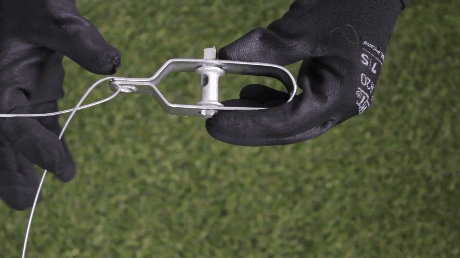
- Attach a radisseur to the last post using a separate piece of line.
Step 3) Thread Line Through the Hole
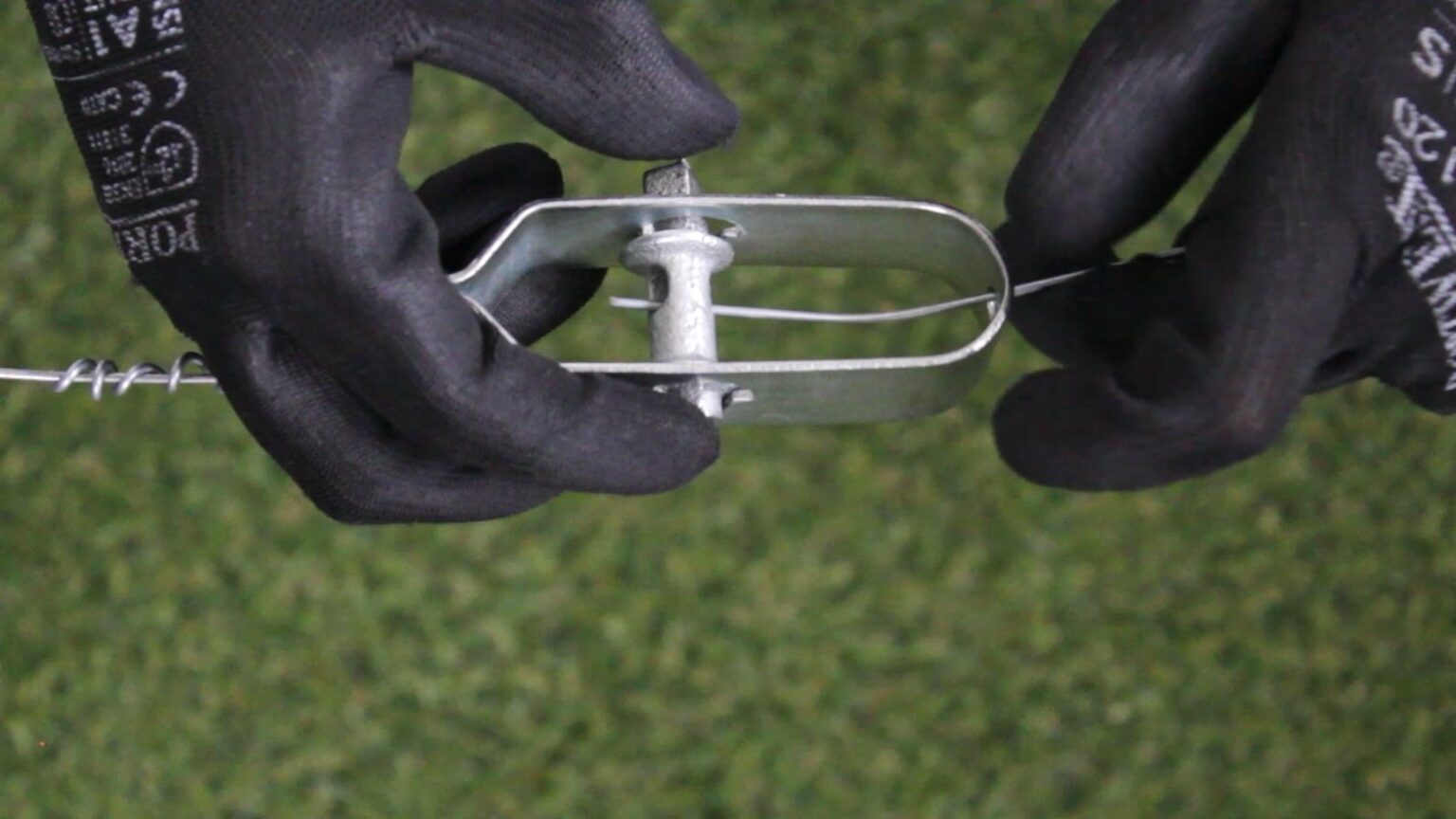
- Thread the line, which was secured to the other end post, through the hole in the center of the radisseur.
Step 4) Tighten the Line
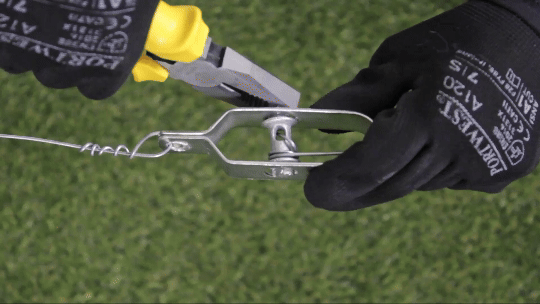
- Use pliers to twist the pin on the radisseur clockwise to tighten the line and finish the process of how to tension fence wire.
WITH TWO NAILS
- Experience Required: Low
- Tools Required: Protective gloves, Cutters
- Materials Required: T posts, Line tensioning wire, 2x nails
- This method is very similar to the one using a radisseur, but it doesn’t require any special materials.
Step 1) Attach Line to Post
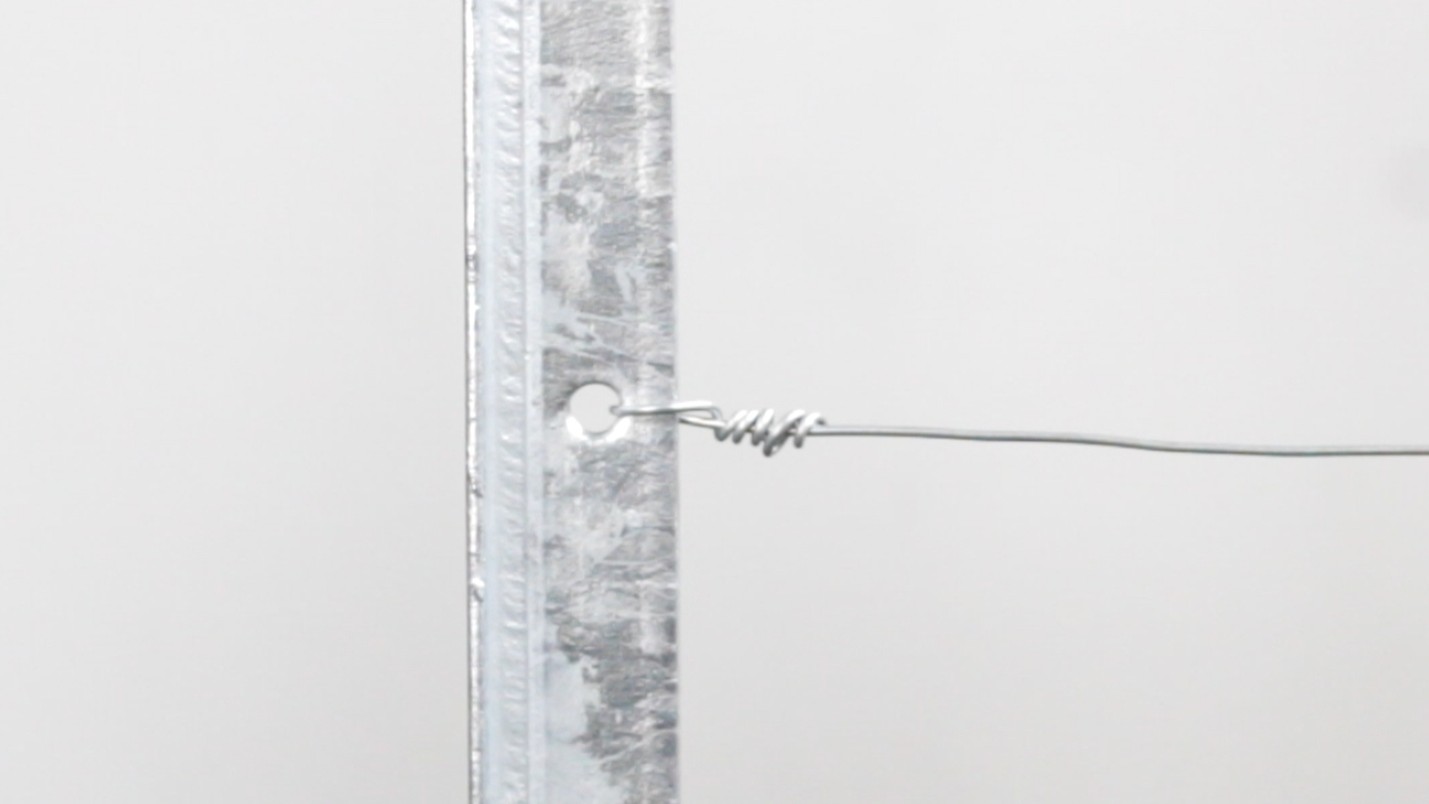
- Begin by securing the line to the post, wrapping it around itself 4–5 times.
Step 2) Create a Loop
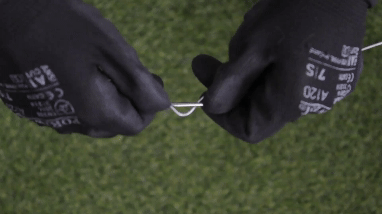
- In the process of how to tension wire without a strainer, simply bend the line slightly and position it in a safe location where it won’t pose a danger.
- Insert a nail and twist it half a turn to form a loop.
Step 3) Tighten the Strand
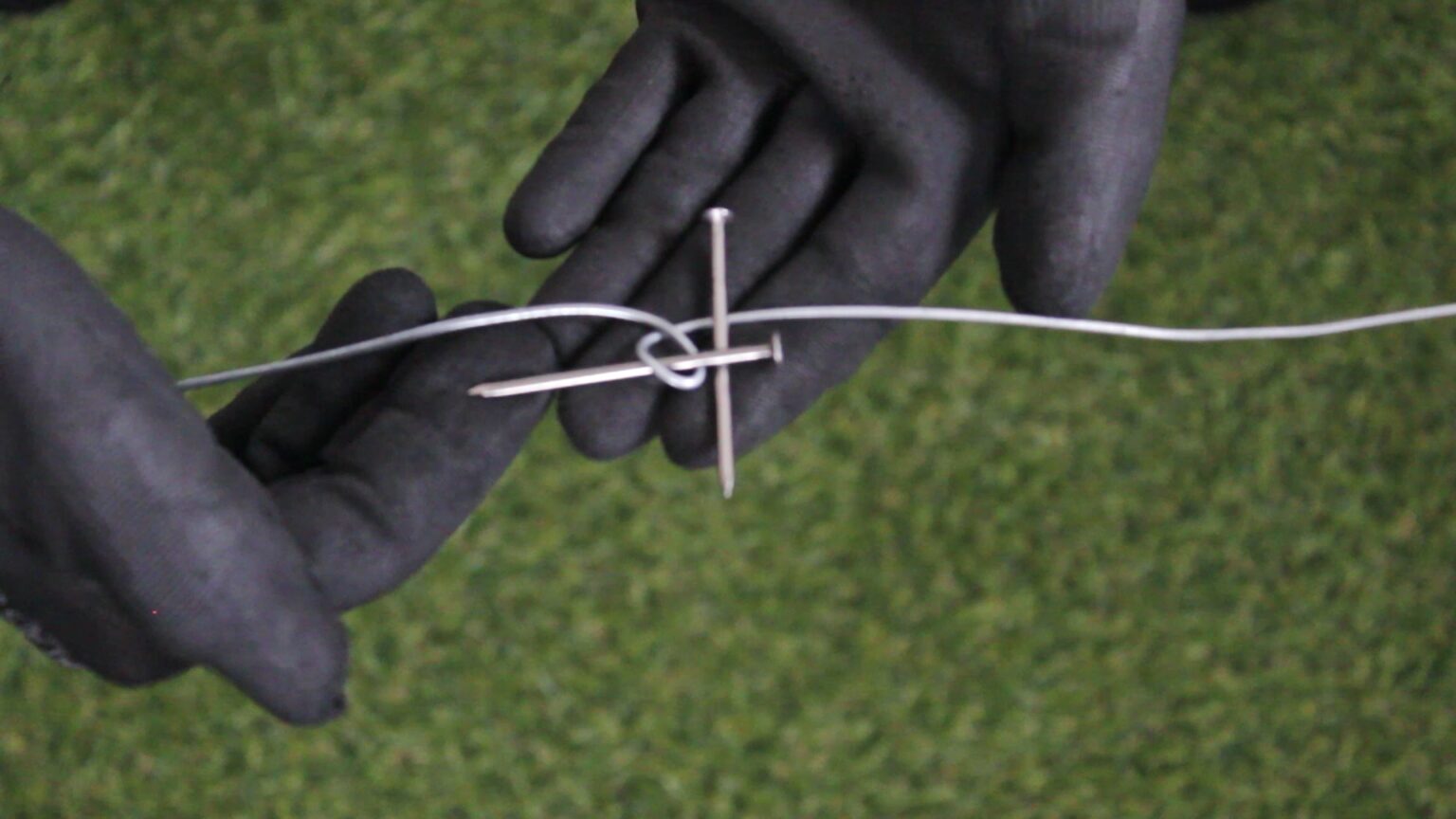
- Place the second nail beneath the loop.
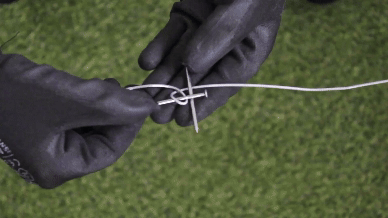
- Hold it firmly, and start tightening the strand.
Step 4) Secure the Nail
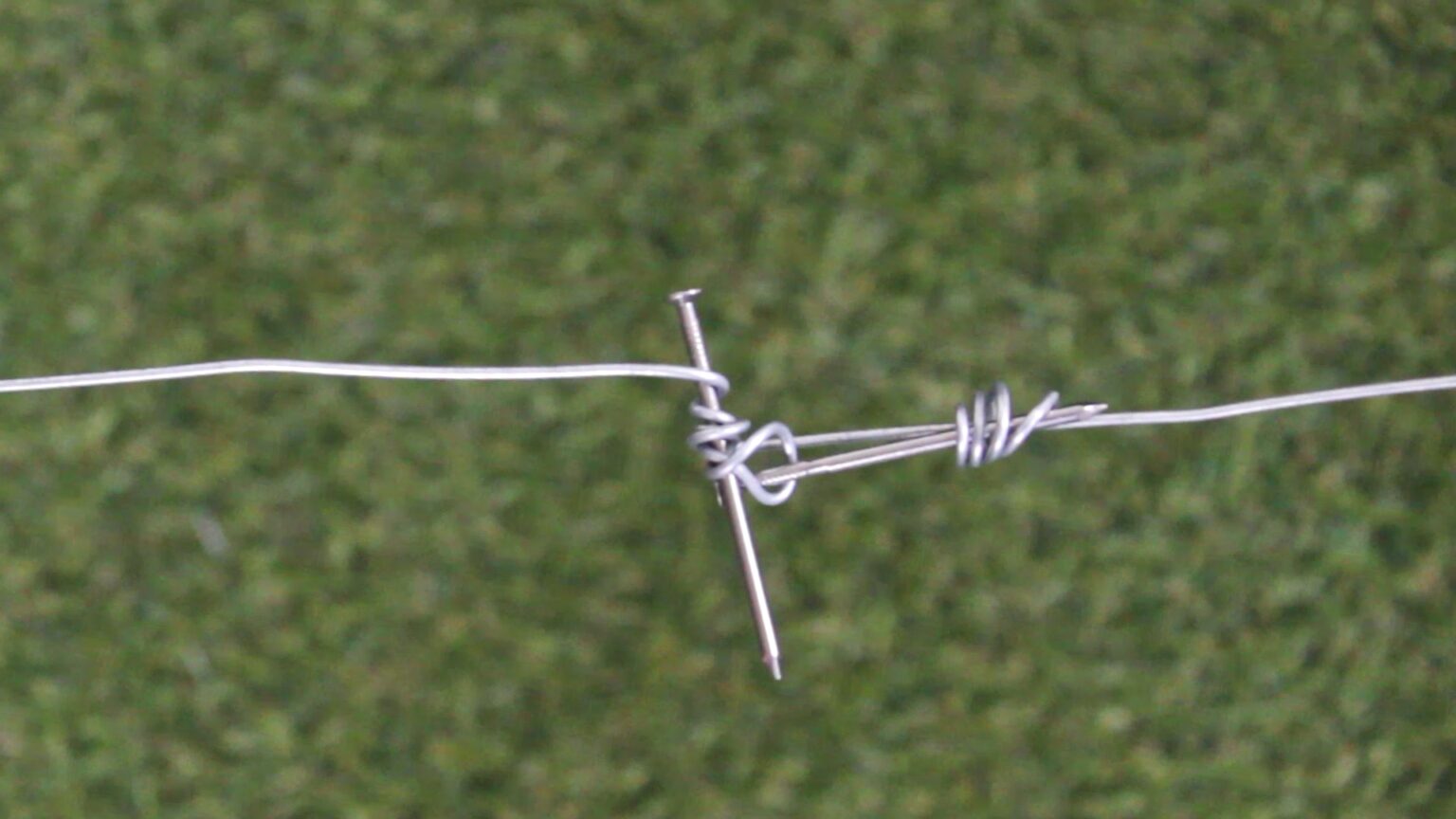
- Secure the nail to the strand using a separate piece of line.
TIPS & TRICKS
- If there are no pre-drilled holes, mark the strand location on the post, then hook or turn the strand around the post two times.
- Avoid over-tightening the line, as excessive tension can cause breakage or damage to the fence posts.
- Regularly check the tightness to ensure optimal performance and adjust as needed.
- Choose high-quality tension lines and tensioners, as durable materials offer better resistance over time.
- Sharp wire ends can cause injuries. Trim any excess line using wire cutters after tightening.
- Consider working with a partner to ensure the strand is properly tightened and securely fastened.
Attaching to Middle Posts
- T Posts or Metal Posts: If the post has pre-drilled holes, thread the line through them. If not, cut small pieces of line and use them to secure the fence wire to each post.
- Wooden Posts: Use fencing staples to attach the strand. Allow a little room for the strand to move inside the staple.
FURTHER READING
- How To Install T Post Fence – A guide showing you how to install t posts in 8 easy steps.
- How to Build a Chicken Wire Garden Fence – Step by step instructions on how to build a chicken mesh garden enclosure.
- How to Install a Wire Mesh Fence – Learn how to install a welded mesh fence.
- Chain Link Fence Installation – A guide showing you how to install a chain link fence.
VIDEO

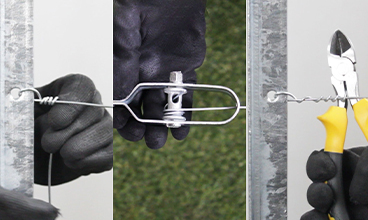
What is the primary purpose of using tension fence wire in construction?
Hi Hendrick,
Thank you for your question !
The primary purpose of using tension fence wire is to keep the fence tight, straight, and strong over time. It helps prevent sagging and adds extra security by making it harder for people or animals to push through or crawl under. Tension wire is commonly used in chain link, barbed wire, and farm fences to help them last longer and stay firmly in place.
Hope that’s helpful! Let us know if you need anything else or have more questions about fencing.
Kind regards,
Timi